Westland Distillery: Day 1

Westland Distillery is located in the SoDo neighborhood of Seattle; SoDo being short for South of Downtown district. It's like the SoMa region of San Francisco in both abbreviated name and character (in fact, take away the skyline and it looks the corner of 4th & Brannan with that B of A on the corner). There are warehouses and industry yards, along with modern-style lofts and architecture, intermixed with various states of urban neglect. As Emerson Lamb would later tell me: "It's as close to downtown Seattle as a single malt distillery can be." There are a lot of zoning issues that need to be addressed when you're distilling ethanol. Plus, how in the hell do you expect to take delivery of thousands of pounds of malted barley in a crowded city street?
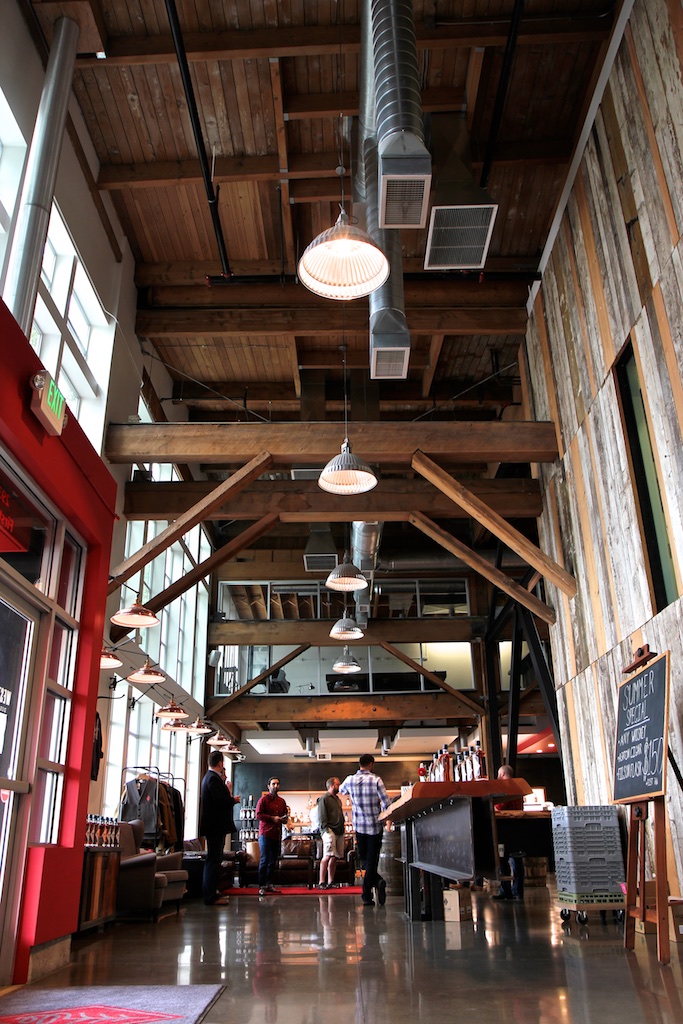
The distillery itself is located inside what was once the Ederer crane manufacturing building—a 13,000 square foot space that was established in 1919. Before being taken over, Ederer produced many of the beams in the retractable roof of Safeco Field, and there are remnants of that steel inside the revamped Westland site. Along with its sleek and modern decor, the furnishings of Westland are incredibly personal and mapped out with extreme detail. The magnificent wooden bar counter, for example, was carved from a dead tree on Emerson's family estate (they wanted to do something with the wood before it began to disintegrate). Much of wood along the walls and ceiling was taken from an old pulp mill in Yakima once owned by Emerson's ancestors. As the paper industry continues to decline, single malt whisky is the endeavor that Emerson hopes to replace it with; establishing a new family enterprise built from the remnants of the past. Every thing here has a very specific meaning and intention; and much of that intention is meant to celebrate the state of Washington—both it's history and it's potential future.
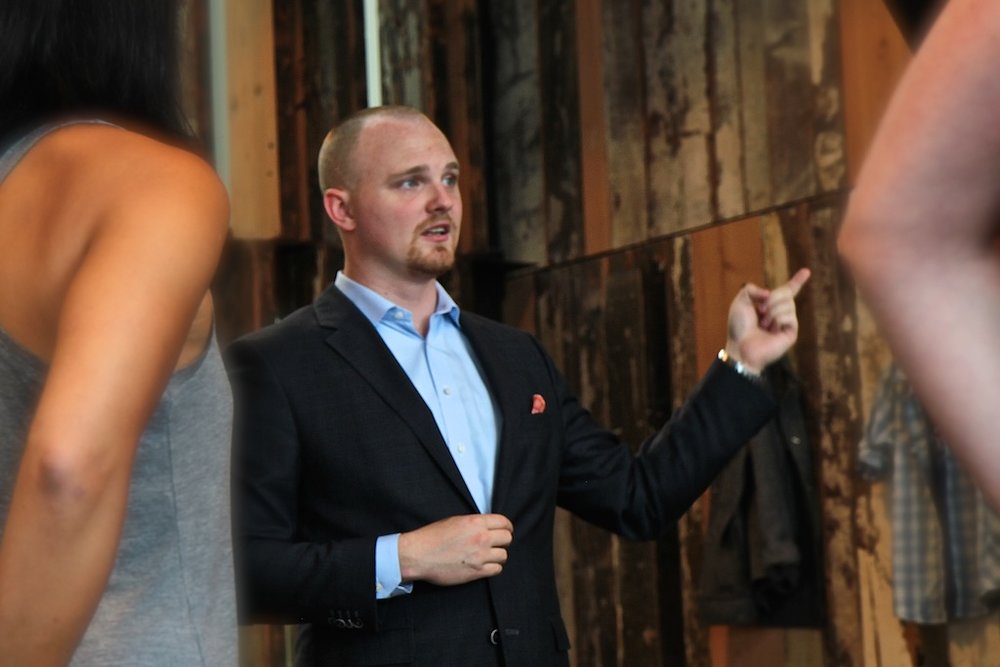
It smells like malt from the moment you walk in; the blast of hot fermented grain envelopes your senses immediately. It's like walking into Glen Garioch or Springbank. It's familiar, yet we're nowhere near Scotland. Emerson is more than aware of where his distillery is, however, and he wants that location to reflect in his whisky. He's convinced that the Pacific Northwest is the spiritual home for single malt in the United States, so he and his team have borrowed as much as they can from Scottish tradition and added in a few local twists to make something distinctly regional.
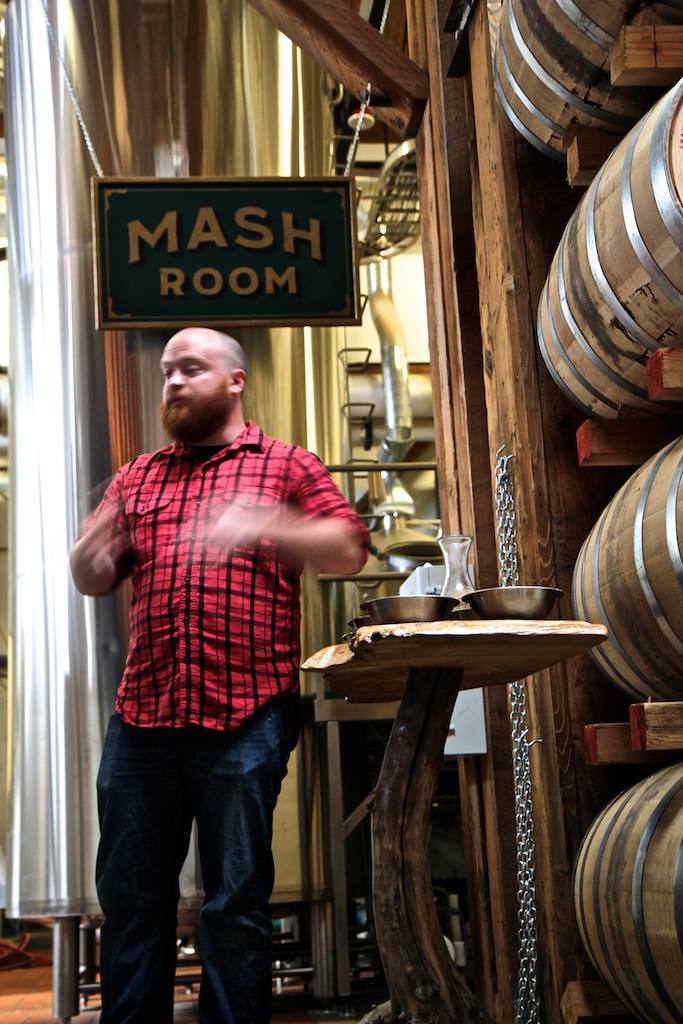
To get into exactly what those specifics are, you have to talk to Westland's master distiller: Matt Hofmann. The first thing he'll want to talk about is the grain. Matt could talk to you for hours just about malting and roasting barley; and for good reason: it's a largely unappreciated facet of single malt production that offers plenty of room for innovation. Unlike many Scottish distilleries I've visited, Westland is not using one type of barley from one particular place. They're not even using one singular recipe, and—much like Glenmorangie—they're experimenting with various roasting methods (some of the results taste like Grape Nuts). Because Matt's background and interests stem from brewing, his approach to single malt begins with the barley. To give you an idea of what's happening here, one of Westland's recipes contains 10% Munich barley from Germany, 12% "extra special" (that's the actual name) barley from Wisconsin, 4% roasted chocolate malt, and larger percentages of barley malted in Washington state. They also do a peated recipe using 100% peated barley from Scotland. Then there's a pale malt recipe, and variations within that. Which recipe they distill depends on the time of year and the need.

Following more brewing tradition, the yeast strain for the fermentation was brought in from Belgium and the outfit was promptly named Jean-Claude Van Damme (being "the muscles from Brussels") because of the power it exerts over the fermentation process. Westland does a slow, five-day ferment that allows a fruitiness to come through in the new make, and on through into distillation.
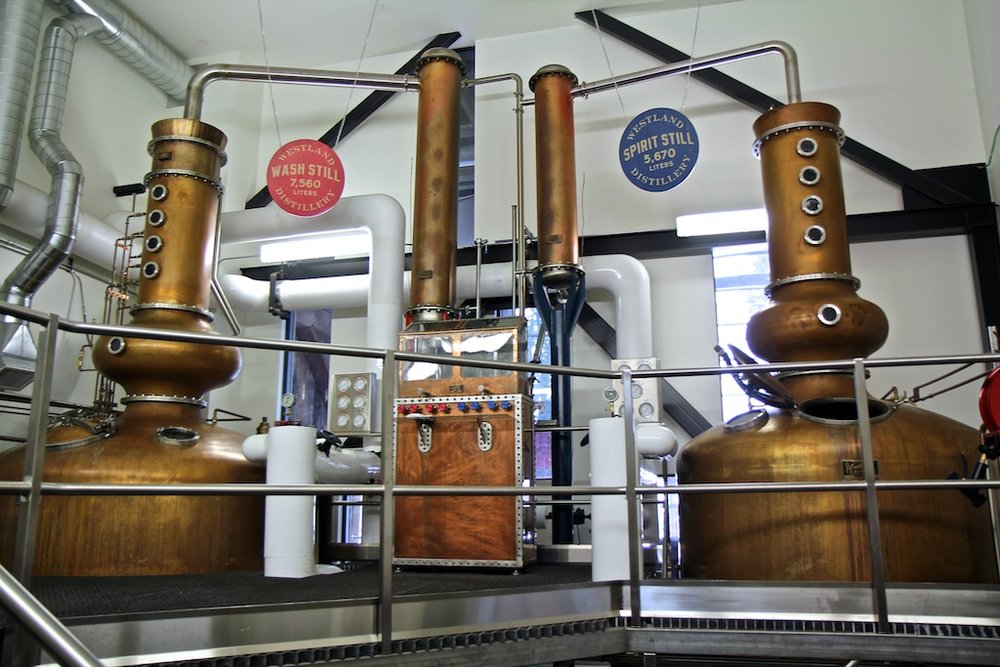
The stills are classic Scottish-style copper pots—one wash and one spirit—that produce a spirit Matt calls: "Double distillation with a twist." Westland uses a very unique process to accent to their already delicious new make. Portions of the discarded heads and tails are combined and redistilled separately (rather than being tossed back into a new batch), and the resulting spirit is married in later to the finished heart cut. It's a bi-weekly process that allows them to capture an incredibly fragrant whiskey, later used to spice up a marriage. Matt is so geeky about whiskey that he's blending his new make before it even goes into wood, but as the boys discovered later: they're not the only ones doing it. Apparently Mortlach uses a similar process in their production, hence the oft-heard "2.5x distilled" when describing their Scottish single malt. In reality, it's a double-distillation with a third distillation on the side. The cuts at Westland are made by nosing the aromas of the spirit. "When it goes from Jolly Rancher fruit into actual fruit," Matt explained, "that's when you know it's time."

Production at Westland is enough to fill about six barrels a day. How those barrels are filled and into which barrels specifically, however, is a whole 'nother can of worms. If you thought Matt was particular about his grains, you should listen to him talk about wood. Westland is one of maybe a handful of distilleries that uses solely oak casks made from air-dried staves. They have two different types of new oak casks: those with staves air-dried for 18 months, and those with 24 months. It's like listening to someone talk about the benefits of dry-aged beef! Then—depending on the cask being used and if it's new oak, refill Bourbon, refill Sherry butt, or refill Sherry hogshead—the proof of the spirit itself must be altered. For example, Matt likes to fill new oak casks at 110 proof, but he might change it up for a refill cask. The reason being that the spirit acts differently with the wood at different percentages, and Matt is always looking to improve on that maturation process by examining the relationship between alcohol and oak. "But I do believe in 'hippie parenting' when it comes to whiskey," he told me. "You can't force a whisky to do what it doesn't want to do. You have to let it go where it wants to."
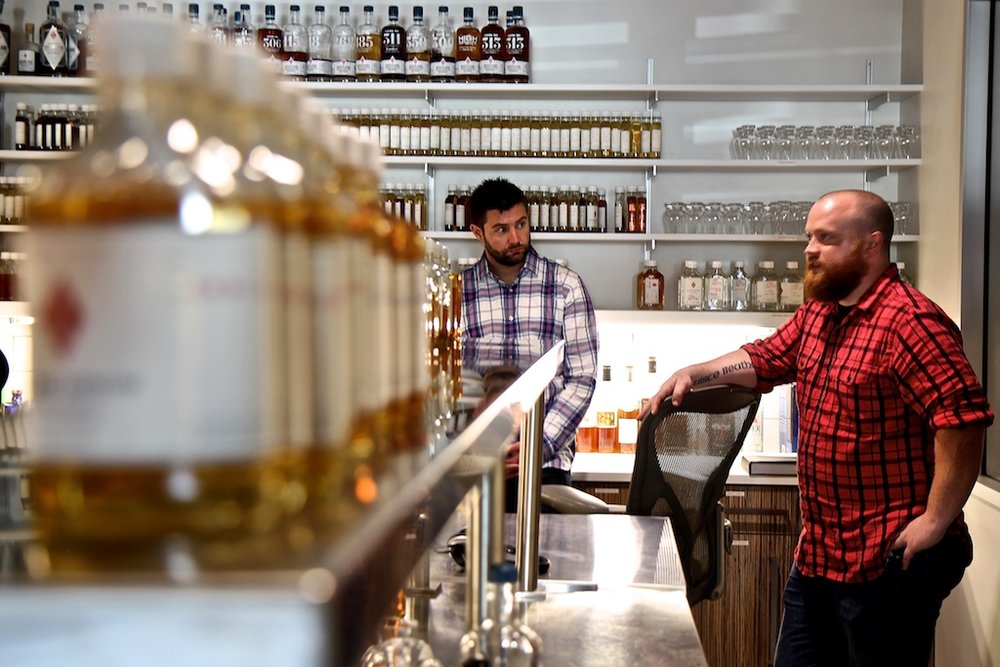
When it comes to blending, Westland is traditionally Scottish in that consistency takes top priority. They don't want batch variation. They want classic Westland character that's reliable with each and every sip, which is why they need to be as big as they are. "It's impossible to achieve a consistent flavor if you're too small," Emerson explained, "simply because you don't have enough different whiskies to work with." There are variables when it comes to making a consistent spirit throughout the year. Water pressure, for example, can completely change the nature of the new make, and apparently Seattle's water pressure changes during the summer, altering the flavor of the Westland whiskey produced during that period. Emerson and Matt are big believers in the idea that one should have as many tools as possible when crafting a new batch of whiskey. The more variety of flavors one has available, the more accurately one can replicate each blend.
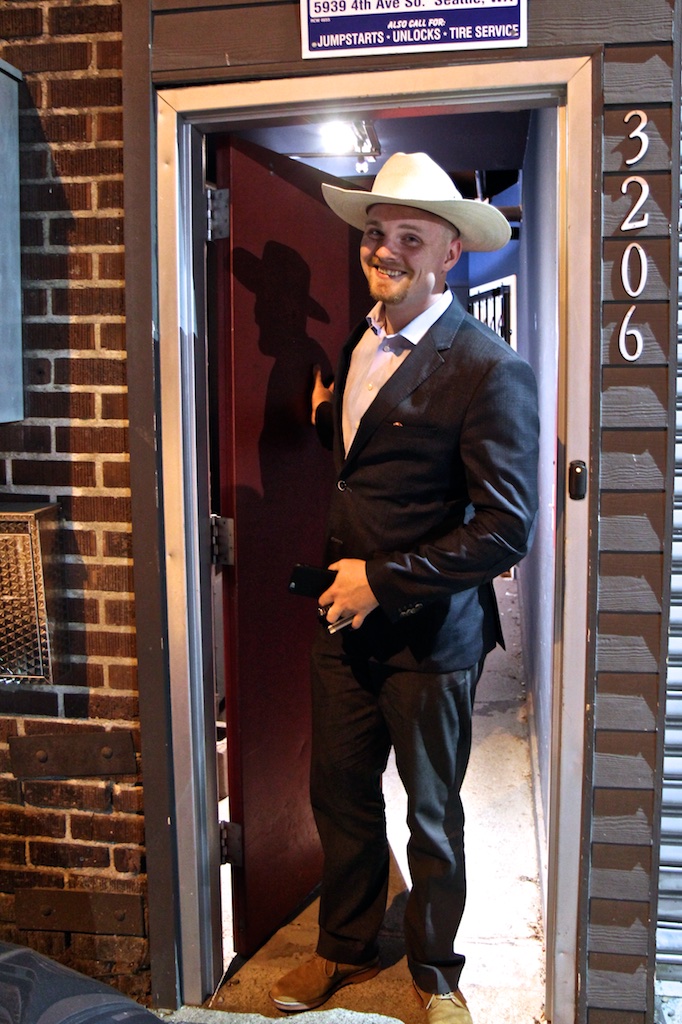
After a full-scale tour, and even a full-scale dinner at the distillery, we walked out the back door, behind the warehouses, through an open alley, and into a non-descript door illuminated by a single bulb in the darkness of night. Emerson produced a cowboy hat from God-knows-where, placed it on top of his head, and shot me a huge smile. "Do you smoke cigars?" he asked.
I guess I do now. This man knows how to live.
-David Driscoll
